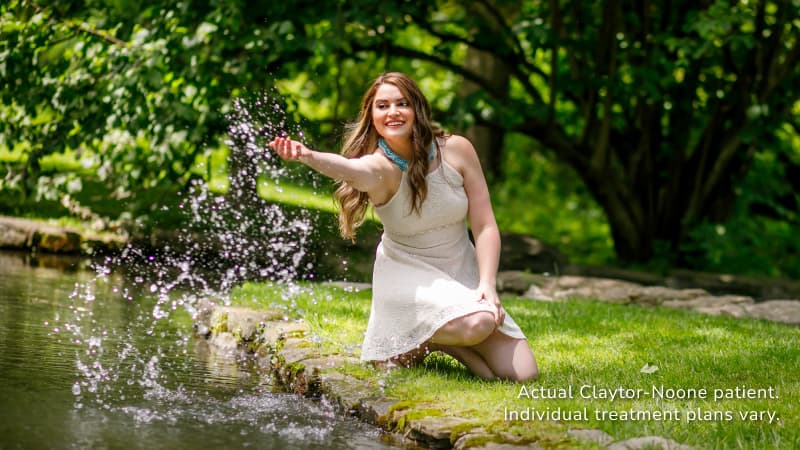Rhinoplasty (Nose Job)
What is rhinoplasty?
A rhinoplasty reshapes, reduces, or augments the nose to improve its appearance. Rhinoplasty, or a nose job, is one of the most frequently performed plastic surgery procedures. Patients often receive a nose job in order to correct a birth defect or repair an injury such as a broken nose. In addition, patients can choose rhinoplasty to improve their confidence and overall appearance.
For a patient with ongoing sinusitis or a deviated septum, patients can receive a rhinoplasty in conjunction with endoscopic sinus surgery or a septoplasty. In these cases, a rhinoplasty effectively treats health and breathing problems, in addition to improving the patient’s appearance. Making this both a cosmetic and functional solution.
Dr. R. Brannon Claytor
Dr. Claytor is board certified by the American Board of Plastic Surgery and holds over 20 years of experience as a cosmetic plastic surgeon. An innovator and teacher in the field of plastic surgery, he uses advanced techniques like the drain-free tummy tuck and deep plane facelift to streamline recovery and provide natural-looking, durable results.
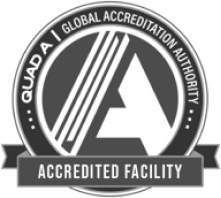
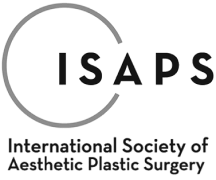
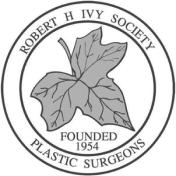
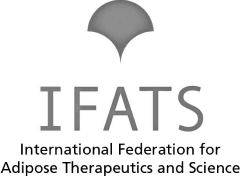
Am I a candidate for a nose job?
Candidates for a nose job must have finished their facial growth. For females, it is typically 15 or 16 years old and boys should be at least 17 or 18. Patients considering rhinoplasty should be in overall good health and not smoke. It is important that candidates have realistic expectations about what surgery can do. Undergoing rhinoplasty may boost self-confidence, however, it should not be a cure-all or the result of social pressure.
What does a rhinoplasty correct?
There are several goals of rhinoplasty which can involve modifying bone, skin, cartilage, or any combination of the three. Philadelphia board-certified plastic surgeon Dr. Brannon Claytor can make one or more of the following corrections to facilitate breathing as well as improve appearance. These corrections of the nose include:
- Remove a hump/modify the nasal bridge
- Reshape or resize the nostrils/tip
- Open breathing passages
- Increase or decrease the size
- Repair an injury
“Dr. Claytor was very helpful and realistic when it came to my surgery. I got rhinoplasty/septoplasty. We both agreed that my nose shouldn’t have a drastic change and should look like it fits my face. I am now 3 months post-op and my nose looks great and it looks perfect for my face! I was nervous going into surgery but I was actually the only surgery set up for that day so I ended up having even more privacy at the surgery center than expected. The week after surgery, Dr. Claytor made himself available via his cell number should I need anything or have any concerns. This was relieving for someone like me who was nervous. His staff was also very friendly and helpful.”
What is a rhinoplasty procedure like?
Rhinoplasty is typically an outpatient procedure, performed under IV sedation or general anesthesia, takes about 1 to 2 hours. During your consultation, Dr. Claytor will review the two techniques he typically uses, closed or open. The biggest difference between the two is the location of the incision during surgery. In closed rhinoplasty, incisions are within the nostrils. In open rhinoplasty, an incision is across the columella, the tissue between the nostrils. With both methods, Dr. Claytor gently lifts the soft tissues covering the nose and then sculpts the bone and cartilage to the desired shape.
Occasionally, additional cartilage is needed to augment the nose. In this case, the additional cartilage comes from the patient’s nasal septum. If larger sections of tissue are required, cartilage may be surgically removed from the ear or other parts of the body as well. For patients that have a deviated septum, the septum and inner structures of the nose are adjusted to improve breathing. If necessary, Dr. Claytor will reshape the nostrils during the final stage of rhinoplasty.
Video Transcript
Dr. Claytor here. Many patients come in saying, “What about my nose? How can you help me? I don’t like my dorsal hump. I don’t like my nasal tip.” I’m here to give you background about nasal anatomy.
So here is a patient before a rhinoplasty, and here is that patient afterward. I will superimpose these pictures on top of this of actual real patients, but these are drawing diagrams of a real patient. What I have done here is outlined the nasal tip of a patient who has a dorsal hump and poor nasal tip definition.
So, how do we go about achieving that contoured, nice little ski-jump nose—which is a term that many people use when they come in asking for a rhinoplasty? But what they’re really looking for is what we call a super tip break, right there, where it comes down and just breaks up a teeny bit to give that nice gentle curve to the nasal tip.
So the important thing to know is that in the nose, you have bone and you have cartilage. The bone is up here; that’s bone. This blue part is the cartilage—the cartilage is, if you push on your nose and it wobbles and moves but still provides form and structure, that’s the cartilage. If you push on it and it doesn’t move, that’s bone.
When addressing patients who have a dorsal hump or an area here that is too large, it’s because they have too much bone and too much cartilage. What we need to do is shave down the bone and shave down the cartilage. These both get reduced. This is why a surgical rhinoplasty is more efficacious and a more long-term treatment for patients rather than a liquid rhinoplasty.
In a liquid rhinoplasty, the patient would come in and would have filler put into the area to try and blunt what we call the radix, right here is the radix. That area gets filled, and that’s what actually makes the nasal tip look smaller and the dorsal hump look less noticeable. However, eventually, it goes away and you have to come back and get more filler.
If you want a more definitive treatment, then what we do is we reduce the nasal dorsum. We take it down by removing bone and by removing cartilage, achieving that nice little sloped nose. By removing cartilage and by removing bone, you can go from a dorsal hump with poor nasal tip definition to a nice nasal slope with a very aesthetic nasal tip. Surgical rhinoplasty, I hope this has been helpful. Thanks so much.
What is a revision rhinoplasty?
It is possible that a patient is not satisfied with the results of the rhinoplasty. In such a case, a second surgery, a revision rhinoplasty, may be performed at a later date. Revision rhinoplasty is a surgical procedure completed to correct deformities caused by a previous operation. A second surgery on the nose is more difficult than the primary rhinoplasty as there is less cartilage and an increased amount of scarring. However, Dr. Claytor can improve the appearance and the function of the nose for those patients that are unhappy with their previous results.
Can a rhinoplasty be combined with other procedures?
Yes, other surgical procedures can be combined with a rhinoplasty including a brow lift or neck lift. This is great for patients who want to achieve a facial transformation. When you have your consultation, you can ask more about the possibility of combining other surgical procedures with your nose job.
This 23-year-old was experiencing breathing anomalies and also wished to address their dorsal hump and tip. After photos show their results 9 months following a rhinoplasty with septoplasty.
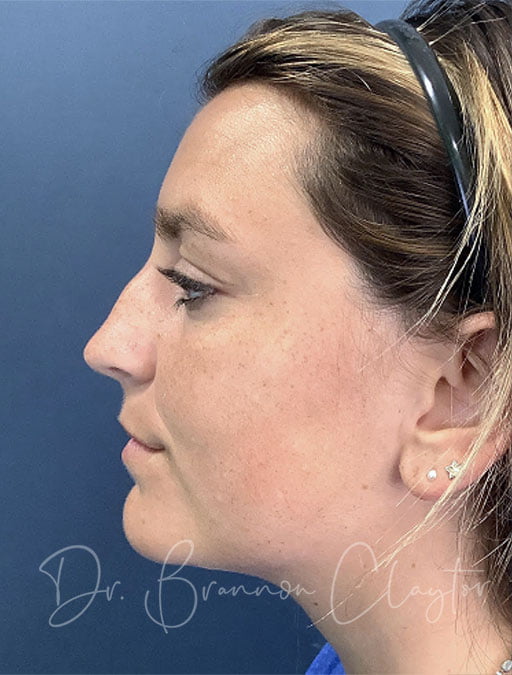
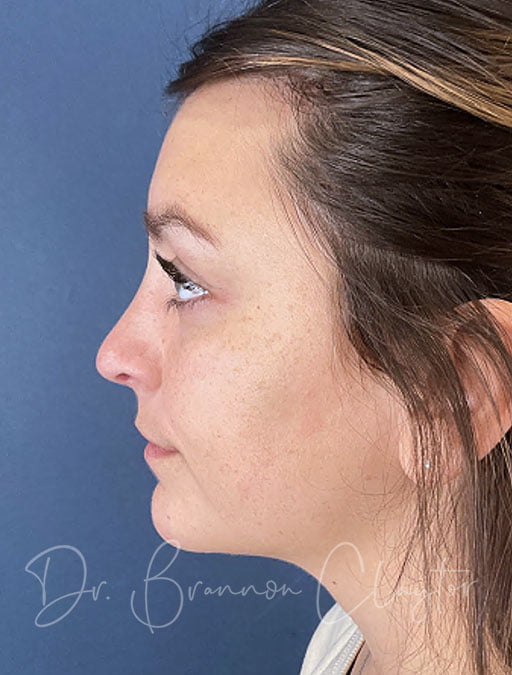
*Individual results may vary.
How long does it take to fully recover from rhinoplasty?
Immediately after surgery, a patient’s nose and eye area are bruised and swollen. They should keep the splints and nasal packing in the nose for a few days. During this time, the patient may experience some nasal pain or a dull headache, as well as some bleeding and drainage from the nose. Most patients feel like themselves within a few days and are able to return to regular activities in about a week. Although the patient usually looks “normal” a week or two after surgery, minimal swelling may be present for as much as a year.
Had a Rhinoplasty with Dr. Claytor in the beginning of January and I LOVE the results. My new nose is a better version of the old one and works with my face perfectly. I would like to thank Dr. Claytor and his staff for being so attentive to my care throughout the process. Dr. Claytor in particular made sure that I understood the before, during and after of the whole process before I agreed to anything. He answered all my questions and made me feel really comfortable with the surgery. Even during my recovery, he was always checking in on me. It was a great experience that left me feeling so confident and happy with my results. 10/10 would recommend Dr. Claytor and staff to a friend 🙂
—Realself review
Are there restrictions following a rhinoplasty?
To increase comfort and decrease swelling, Dr. Claytor recommends that patients follow these post-surgical directives:
- Avoid strenuous activities
- Take baths instead of showers
- Refrain from blowing your nose
- Avoid becoming constipated
- Avoid exaggerated facial expressions
- Brush the teeth gently
- Avoid pulling clothing over the head
- Use sunscreen with an SPF of 30 or higher
- Limit dietary sodium
- Do not use ice packs
Can I wear glasses after nasal surgery?
Contact lenses can be worn immediately but glasses will have to be taped to your forehead or propped on your cheeks for up to seven weeks.
- Key Benefits
- Glossary
- Improved Appearance: Rhinoplasty can enhance the overall facial aesthetics by reshaping and refining the nose, correcting asymmetry, and reducing humps or bumps.
- Better Breathing: Functional rhinoplasty can address structural issues within the nose, such as a deviated septum, to improve breathing and alleviate congestion.
- Correction of Birth Defects or Trauma: Rhinoplasty can correct congenital deformities or injuries, restoring both form and function to the nose.
- Harmonious Facial Proportions: Balancing the nose with other facial features can create a more balanced and harmonious overall appearance.
Septoplasty: Surgery that corrects a deviated or crooked septum, improving breathing and nasal function.
Turbinate Reduction: Procedure to decrease the size of turbinates, which are structures within the nose that can obstruct breathing if enlarged.
Osteotomy: Surgical fracturing and reshaping of the nasal bones to narrow or straighten the nose.
Alar Base Reduction: A technique used to narrow the width of the nostrils.
Tip Plasty (tipplasty): Refinement and reshaping of the nasal tip.
Dorsal Hump Removal: Procedure to remove a bump or hump on the bridge of the nose.
Open Rhinoplasty: A technique where an external incision is made between the nostrils to provide better access to the nasal structures.
Closed Rhinoplasty: A less invasive approach with incisions made inside the nostrils, leading to less visible scarring.
Cartilage Grafting: Using cartilage from other parts of the body to augment or support the nasal structure.
Septal Cartilage: The cartilage that separates the two nostrils, often used as a source of grafting material.
Spreader Grafts: Small, reinforcing strips of cartilage placed to improve or maintain airway function.
Columella: The external, visible portion of the nasal septum, situated between the nostrils.
Nasal Valve: The narrowest area of the nasal airway, which is crucial for proper breathing.
Rhinoplasty Revision: A secondary procedure to correct or improve upon the results of a previous rhinoplasty.
Anesthesia: Medication provided to patients to prevent pain during surgery. In rhinoplasty, this might be general anesthesia or local anesthesia with sedation.
Recovery Period: The time it takes for a patient to heal post-surgery, including restrictions on activities and instructions for care.
Are there risks to getting a nose job?
Complications associated with rhinoplasty are rare and usually minor. These risks can include:
- Recurring nosebleeds
- Difficulty breathing through the nose
- Persistent pain
- Discoloration of skin on the nose
- Scarring
- Perforation of the nasal septum
- Permanent numbness in or around the nose
Does insurance cover nose surgery?
Insurance may cover rhinoplasty if it is done for reconstructive or medical reasons.
Why choose Dr. Claytor for your plastic surgeon?
Double Board-Certified for a high level of safety and precision
Chief of Plastic Surgery at Main Line Health, a top health system
Board Member of The Aesthetic Society, shaping the future of aesthetics
8x Philadelphia Magazine Top Doctor for exceptional patient care
Recognized as one of America’s Best Plastic Surgeons by Newsweek
Drain-free recovery expert for faster, more comfortable healing
Deep plane facelift innovator and global educator
Active researcher in surgical and non-surgical aesthetic advancements
Highly regarded for his surgical expertise and outcomes, as well as his dedicated follow-up care

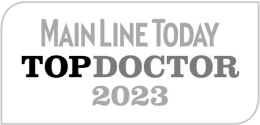

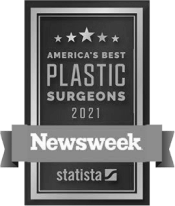
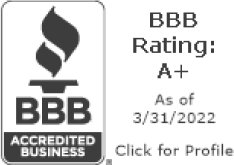

Double-board certified plastic surgeon R. Brannon Claytor, M.D., F.A.C.S., was recently named one of “America’s Best Plastic Surgeons 2021” by Newsweek for his exceptional skill and experience in performing rhinoplasty. Newsweek conducted a national survey among plastic surgeons and other medical professionals, asking them to recommend the best plastic surgeons in their state and across the U.S. based on several quality dimensions. This distinction is reserved for the top specialists in the field of plastic surgery.
Dr. Claytor’s superb skill and results have been recognized for over a decade, earning him numerous other awards, including being named as a Philadelphia Magazine “Top Doctor” from 2017 to 2024 and one of Main Line Today’s “Top Doctors” from 2015 to 2024. Dr. Claytor’s warmth and dedication to his patients’ needs make him one of the Philadelphia area’s favorite plastic surgeons.
Schedule a consultationIf you are interested in rhinoplasty and would like to see if you are a candidate, contact our Philadelphia office at (610) 527-4833 to schedule a consultation. Dr. Brannon Claytor serves Philadelphia, Bryn Mawr, PA and surrounding areas.
References »
Parrilla C, Artuso A, Gallus R, Galli J, Paludetti G. The role of septal surgery in cosmetic rhinoplasty. ACTA Otorhinolaryngologica Italica. 2013.
Nellis JC, Ishii M, Bater KL, Papel ID, Kontis TC, Byrne PJ, Boahene KDO, Ishii LE. Association of Rhinoplasty With Perceived Attractiveness, Success, and Overall Health. JAMA Facial Plastic Surgery. 2018. doi: 10.1001/jamafacial.2017.1453.
Crosara PF, Nunes FB, Rodrigues DS, Figueiredo AR, Becker HM, Becker CG, Guimarães RE. Rhinoplasty Complications and Reoperations: Systematic Review. International Archives of Otorhinolaryngology. 2017. doi: 10.1055/s-0036-1586489.
Kalantar-Hormozi A, Ravar R, Abbaszadeh-Kasbi A, Rita Davai N. Teenage Rhinoplasty. World Journal of Plastic Surgery. 2018.
Areas Served:

Medically reviewed by Dr. R. Brannon Claytor — Updated on Mar 3, 2025

